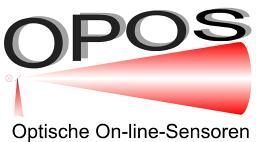Defect inspection systems
for transparent articles and glossy/reflective surfaces
The selection of the most suitable system concept depends essentially on the properties of the test object. The first question is:
Is a simple camera system sufficient for the test?
For the two inspection tasks considered here, this means specifically:
Only transparent volume
- The depth extension is relatively small, so that the depth of focus of a camera is sufficient for imaging the structures of interest.
- The specimen can be guided / set down in such a way that the test volume is safely within the depth of focus.
Glossy / reflective surfaces
- The surface is flat.
- The surface can be fixed / guided in such a way that the depth of focus of a camera is sufficient to image the structures of interest
- No transparency check required
If these criteria are met, we recommend a camera system from another supplier.
For all other cases you should consider one of our imaging defect scanners. In any case, you benefit from our system:
- the extremely large depth of field (compared to cameras)
- the great independence from ambient light
- the simple and intuitive adjustment
For a pure defect inspection without extra or extreme requirements (e.g. detection of very fine structures < laser beam diameter), we recommend our
Retroreflex laser scanners, optionally combined with
material characterization or
measurements of pulling forces in the production of glass tubes or rods. They are easy to install and tolerate refractive forces or curvatures of the surfaces.
Retroreflex-Transmission test principle

Principle of the Retroreflex-Reflection test

Additional extreme requirements can be met in the following cases.
Transmission setup
for objects with weak refractive powers (deflection of a laser beam) such as windshields.
In this case a separate receiver unit with an additional dark field channel can be used.
This allows the detection of ultra fine defects.

Reflection setup
for (almost) flat surfaces (almost constant angle of incidence of a laser beam on the surface)

With an optional polarization evaluation, the material properties can be investigated polarimetrically over a large area. All possibilities offered by the known methods of polarimetry for material characterization can be used to investigate the test specimens.
With an optional polarization evaluation, the material properties can be investigated ellipsometrically over a large area. All possibilities offered by the known methods of ellipsometry for material characterization can be used to investigate the test specimens.
Send us your samples for a first free test or let us convince you with a device demonstration in your house!


